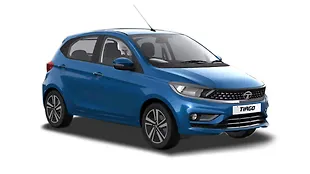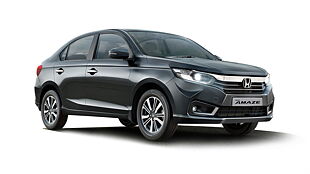Introduction

This is the second coming of the Honda Jazz in the Indian market, while it did make the right impression even last time, it failed to get the numbers Honda expected. The Jazz came to India ahead of its time when spending close to Rs 9 lakh on a hatchback was unheard of.
The times have changed, the i20 top-end costs even more and still records monthly sales figures that go into five digits. Honda has now readied the new Jazz for the Indian market in a bid to get a share in the premium hatchback segment. But is it potent enough to take its direct competitor - the Hyundai Elite i20?
So, on one side we have the second generation of Hyundai's i20; and on the other side, Honda's third generation of the Jazz. Read along as we explain the tidbits of both cars to you, to help you to decide which hatchback suits your purposes and fits the bill.
Looks and Styling

The Elite i20 is built on Hyundai's 'Fluidic Sculpture 2.0' design philosophy taking it a quotient up from the earlier model of the i20. The fascia sports the company's new signature hexagonal grille covered by a new thin horizontal strip that meets the headlamps. The side profile of the car comes with darkened B- and C-pillars making it look attractive. The rear profile with the 'boomerang' shaped tail-lights and wrap-around windows further flow in to the sides giving it a visually appealing look. This is without doubt one of the prettiest hatchbacks in the Indian market today and it is going to be very difficult for any new model to compete with it on the looks.

The Honda Jazz is similarly based on Honda’s new design 'Exciting H Design'. The hatchback now looks sportier, aggressive, though looks are now aligned towards that of a small MPV. The Jazz is based on the same platform as the Honda City; however, the new design cues have made sure that the car looks chic and modern. The shape of the grille and headlamps looks similar to the City's design, but the bumper has been differently designed to give the car a sportier look. Like many of the modern cars, the B-pillar is blackened out and the car sports alloy wheels with an attractive pattern. The tail lamps are smartly integrated into the body and are vertically extended till the spoiler. At 3,955mm in length and 1,702mm in width, the Jazz is smaller than the Elite i20 on paper, which stands at 3,985mm and 1,734mm respectively. It is a taller car though at 1,524mm against 1,505mm of the i20; and that along with the design makes the Jazz look like a bigger car.
Talking purely in terms of design, the i20 is definitely a better looking car, but the Jazz looks bigger and has the Honda badge working in its favour.
Interior
Both the Elite i20 and the Jazz are up to the mark when it comes to space, quality of material, ergonomics, fit and finish and the equipment list including safety features. Both the cars get a similar feature list apart from a few features specific to the models.

Hyundai is known for their elaborate interior and the i20 is no different. To start with, it has a longer wheelbase than its older version, meaning more cabin space compared to its predecessor. The dual-tone dashboard, stylish three-spoke steering wheel and upholstery look premium and have a good feel to it. The double-DIN music system misses out on a touch-screen system, but gets 1GB of internal memory. Start-stop engine button, two airbags, ABS with EBD and climate control are seen in the top-end variants, but the rear AC vents are an additional feature that its competition misses out on.

Coming to the latest and most modern car, the Jazz, it also gets almost all features like the i20 and with some smart engineering, it is more spacious. The design layout, steering mounted controls, instrument cluster and upholstery is good, but Honda’s interior still lack that premium feel as compared to the Hyundai. Though the Jazz also gets features like two airbags, steering-mounted controls etc., it lacks the rear AC vents that are present in the Elite i20. It makes up for this with the extra features and additional boot space. It gets a 12.7 inch display for infotainment system and paddle shifters for the CVT model. The boot space of the Elite i20 with the rear seats up is 285litres, whereas the Jazz gets 354litres of boot space. This space increases to 884litres with seats down. So undoubtedly, the Jazz is more spacious, but the cabin of the i20 feels much better in terms of quality and aesthetics.
Performance
The Elite i20 is also offered in both petrol and diesel engine options like its earlier model. In fact, the engine line-up includes the same petrol and diesel engines from the previous car. The petrol is a four-cylinder 1.2-litre Kappa engine producing 83bhp of power and 113Nm of torque. This unit comes mated to a five-speed manual gearbox and delivers a fuel efficiency of 18.6kmpl. The diesel variant is powered by the 1.4-litre CRDI mill churning out 89bhp of power and 219Nm of torque and comes mated to a six-speed manual gearbox. The oil-burner i20's fuel efficiency of 22.54kmpl are nowhere close to the Jazz's fuel economy, but it will be interesting to see how much can both the cars deliver in real world driving conditions.

Earlier, the Jazz came only with a petrol powerplant, but now Honda has introduced the diesel mill option as well with this new iteration. The engine line-up of the new Honda Jazz includes the 1.2-litre i-VTEC petrol mill that also powers the Amaze and Brio and puts out 90bhp of power with a torque of 110Nm. The new 1.5-litre i-DTEC diesel motor pumps out 100bhp of power and 200Nm torque. The five speed-manual transmission equipped model of the petrol Jazz boasts of an ARAI-certified fuel efficiency of 18.7kmpl, while the CVT variant offers 19kmpl. The fuel efficiency figures of the diesel variant of the Jazz are staggering as at 27.3kmpl, it becomes the country’s second most fuel efficient model after the Maruti Celerio diesel's fuel economy of 27.62kmpl.

Knowing Honda’s i-VTEC technology and their petrol engines, the 1.2-litre mill will be the most refined engine in the segment, so the petrol Jazz is going to feel great. But the new Honda diesel engine in the Amaze, City and Mobilio, isn’t as refined as Hyundai’s diesel engines. So in terms of petrol, there is no doubt Honda wins, but on the diesel front, the i20’s oil-burner’s refinement is better. So if one can live with bad NVH levels, the diesel Jazz is still a good option as the Honda’s diesel engine offers more power and efficiency.
Verdict

So a close look at the cars make us believe that the vehicles are surely going to give neck-to-neck competition to each other in the B+ segment of cars in India. The Elite i20 looks better than the Jazz, the interior has a better feel, but then the Jazz has more space, more utilitarian features and higher fuel efficiency along with better performance. Also, the absence of an automatic gearbox in the Elite i20 and a couple of more features in the Jazz, make the latter car score a few points over the former.
Both the brands are known for their excellent after-sales service and it looks like things are going to boil down to pricing. Honda is known to charge a premium for their cars; and in this segment, where the competition is evenly matched it might prove to be a wrong strategy.


![Honda Jazz [2015-2018] Image Honda Jazz [2015-2018] Image](https://imgd.aeplcdn.com/272x153/cw/ec/19352/Honda-Jazz-Exterior-118958.jpg?wm=0&q=80)
![Honda Jazz [2015-2018] Exterior Honda Jazz [2015-2018] Exterior](https://imgd.aeplcdn.com/199x112/cw/ec/19352/Honda-Jazz-Exterior-118958.jpg?wm=0&q=80)
![Honda Jazz [2015-2018] Right Front Three Quarter Honda Jazz [2015-2018] Right Front Three Quarter](https://imgd.aeplcdn.com/199x112/cw/ec/19352/Honda-Jazz-Right-Front-Three-Quarter-100665.jpg?v=20180102174133&q=80)
![Honda Jazz [2015-2018] Rear View Honda Jazz [2015-2018] Rear View](https://imgd.aeplcdn.com/199x112/cw/ec/19352/Honda-Jazz-Rear-view-100671.jpg?v=201711021421&wm=1&q=80)
![Honda Jazz [2015-2018] Steering Wheel Honda Jazz [2015-2018] Steering Wheel](https://imgd.aeplcdn.com/199x112/cw/ec/19352/Honda-Jazz-Steering-Wheel-100877.jpg?v=201711021421&wm=1&q=80)
![Honda Jazz [2015-2018] Music System Honda Jazz [2015-2018] Music System](https://imgd.aeplcdn.com/468x263/cw/ec/19352/Honda-Jazz-Music-System-100883.jpg?v=201711021421&wm=1&q=80)


























